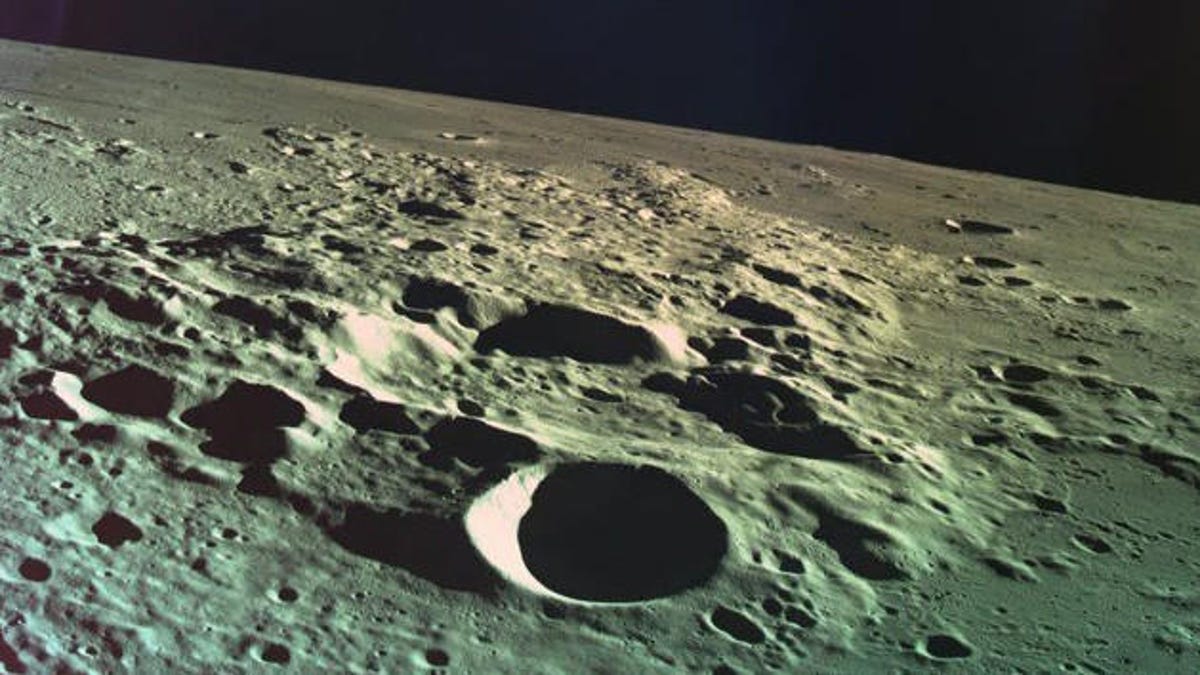Beresheet crashed on the moon, but its 'Lunar Library' likely survived
The Arch Mission Foundation's 30-million-page archive of history, books and even magic was built to last longer than Earth itself.

The surface of the moon as seen by Beresheet moments before it crashed into the lunar surface.
Israeli probe Beresheet didn't make it to the moon in one piece, but one of its most intriguing pieces of cargo might have.
At this moment, it's possible there's a new crater on the lunar surface created by the spacecraft's crash landing, and in that impact zone is a metal disc containing a full copy of Wikipedia, the history of the world and magician David Copperfield's secrets, among many other things.
Beresheet was carrying a 30-million-page "Lunar Library" created by the Arch Mission Foundation (AMF) and built to outlast humanity itself, perhaps for billions of years.
"We have either installed the first library on the moon, or we have installed the first archaeological ruins of early human attempts to build a library on the moon," AMF co-founder Nova Spivack said in a statement.
Another clue to Beresheet's location? #findthelunarlibrary https://t.co/dcmoKiJD9Y
— Arch Mission Foundation (@archmission) April 18, 2019
While the archive is the size and shape of a DVD, it's actually 25 stacked thin nickel films bonded together with an epoxy and then wrapped in mylar and Kapton tape meant to withstand extreme temperatures.
AMF revealed after the crash that in addition to the text of 30,000 books and linguistic keys for 5,000 languages, Copperfield's secret technological tricks were also included in the library.
"One of my heroes is George Méliès, one of the fathers of modern cinema and also a great magician," Copperfield said in a release. "His most famous movie was 'A Trip to the Moon,' which in 1902 visualized people landing on the moon ... We're bringing it full circle and I find that kind of poetic."
AMF says the Copperfield section or "vault" of the library is the first of 25 additional vaults to be revealed. Among the remaining unannounced vaults is some kind of music collection.
A document outlining the likelihood of the library's survival and its possible location has been posted online by AMF.
"Taking the construction of the Lunar Library into account, we believe it has a high chance of being intact," it reads.
AMF has requested high-resolution imagery of the crash site from the Lunar Reconnaissance Orbiter, but it may be difficult to see such a small object in the images.
So it may be up to a future lunar mission to locate the library. Or perhaps visitors from somewhere other than Earth will get to it first.

